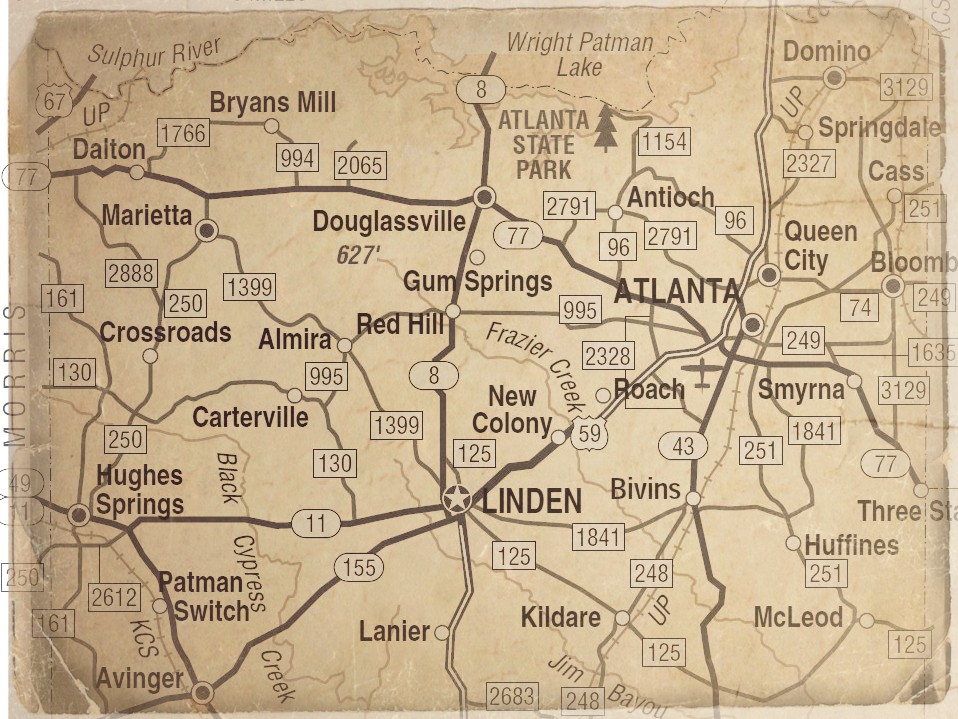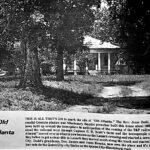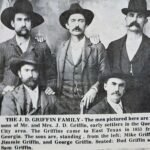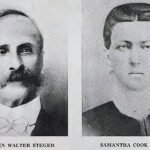
By Kate Stow
These articles were written in 2022 to commemorate the 150th anniversary of the founding of Atlanta and were published as weekly installments in the Cass County Citizen’s Journal-Sun.
The Caddo Indians
Long before any communities were formed here, the Caddo Indians populated an area encompassing the three-state area. The Kadohahacho, one of the tribes of the Caddo living in East Texas, made their homes in switch cane huts shaped like beehives.
The Caddo were believed to be the most advanced Indians living in Texas and were peaceful unless threatened. They were mainly farmers who lived in one place, moving only when the ground no longer supported crops of corn, beans, squash pumpkins, sunflowers and tobacco.
The friendly Caddoans produced black leather clothing and pottery. Their term “Teyshas” means friend or ally and became the name of the new Republic in 1836 and in 1845 the state of Texas.
Arrowhead hunting around the Sulphur River area and the banks of Lake Wright Patman has been a pastime of many residents. Pieces of pottery have also been found in our area.
East Coast Immigrants
In the early 1800’s settlers began to make their way westward from the East Coast. Some came by riverboat to the ports in Jefferson, and other by wagon on a path from Arkansas southward over the Red River into the Republic of Texas.
The trail most often used was called Trammel’s Trace. Named after Nicholas Trammell (1780-1856) of Tennessee, it began as a smuggler’s trail during the time when Spanish and Mexican authorities attempted to control trade in the region. Trammel travelled the path to Mexican territory from Tennessee and back frequently to trade horses and contraband.
Trammel’s Trace was the first route from the United States into the northern boundaries of Spanish Texas where it intersected with EL Camino Real do los Tejas in Nacogdoches. By the 1820s, as Mexico gained independence from Spain, smuggling declined as Anglo immigration became the primary use of the trail. Familiar names such as Sam Houston, David Crockett, and James Bowie joined throngs of immigrants making passage along Trammel’s Trace.
Trammel’s’ Trace across Cass County is fairly well documented. It entered the county at Epperson’s Ferry on the Sulphur River near Cusseta and exited the county just west of Avinger.
Some of the immigrants following the trail had travelled weeks from Georgia, and upon crossing the Sulphur River they were pleased to find land that reminded them of home. These early settlers fanned out and formed communities throughout the area, naming some of them after towns in Georgia.
A new Texas county
The Caddo Indians had been relocated to a reservation on the Brazos River by 1846 when the county of Cass was formed by using the Sulphur River to divide it from Bowie County in the North. It was named for U. S. Senator Lewis Cass of Michigan, who had favored the annexation of Texas to the United States. In 1861 the name was changed to Davis County, after Jefferson Davis, president of the Confederate States of America. In 1871 the name was returned to Cass County.
Cass County was originally formed for cotton plantations with the majority of the population being enslaved African Americans. After the Civil War the freedman remained here as tenant farmers and sharecroppers.
The land in Texas’ newest county was thick with tall trees that were perfect for milling into lumber. Saw mills sprang up all over as new homes and fences were built.
The Texas and Pacific Railroad
When the Texas and Pacific Railroad was looking for a route to connect Texarkana to Marshall, the path was anticipated to be about two miles northeast of the present site of the Atlanta Depot. In 1862 the Rev. Jesse Dodd and his wife, Martha, built a home in a new settlement he called “Atlanta.”
The little community soon had two stores, a grist mill, a blacksmith shop, a church and a post office. Dr. George Salmon moved there and opened a drug store and medical practice. Henry Ray built a general mercantile business and John O’Dell had the post office in his general store.
The Rev. Joe Stephens organized the Concord Methodist Church there, which eventually moved and became the First United Methodist Church of Queen City. Mail was brought to the new town weekly by horseback from Bright Star, Arkansas and Jefferson.
However, a surveyor for the T&P Railroad decided that route was far too hilly and swampy and would require many bridges, so a more level route was chosen for the line.
The Dodd House still stands on land owned by the Brooks family, between Queen City and Bloomburg. The Atlanta city limits was extended to include the home. It has fallen into disrepair, but still holds the title of the “oldest home in Atlanta.”
The Free 111 Acres
The new route chosen by T&P ran right through the plantation of Preston Rose Scott. He donated 111 acres for the tracks in return for the honor of naming the first streets in town after his children: Hiram, William, Buckner, Thomas and Louise.
The track was laid and completed in 1872. At that time T&P built the Atlanta depot, which still stands.







